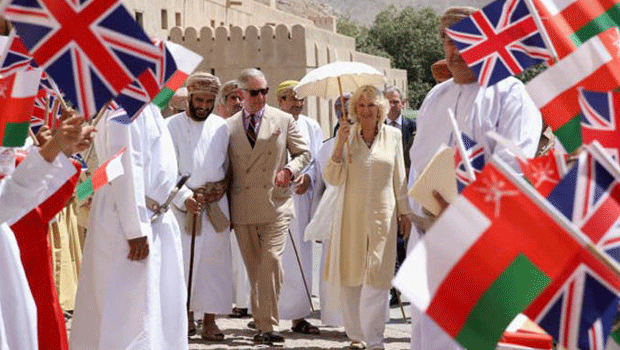
When Britain's Prince Charles and the Duchess of Cornwall visit the new National Museum in Muscat, they are in for a treat.
The museum was only opened to the general public in July of this year, though a plaque in the entrance hall indicates its official opening by His Highness Sayyid Haitham bin Tariq Al Said, Minister of Heritage and Culture, on December 14 , 2015.
What is good, even before one starts looking at all the 12,500 artefacts in 4,000 square metres of exhibition space, is that, once again, one can linger to admire the façade of the nearby Al Alam Palace from the comfort of the museum’s air-conditioned entrance hall, rather than in the fierce heat outside.
According to the director general of the museum, Jamal Al Musaawi, the idea behind the museum is to ensure Oman’s heritage is understood within the Sultanate and recognised internationally, something which is clearly being achieved in its thirteen exhibition halls, bearing in mind the number of local school pupils and those from the expatriate community visiting when I was there.
In addition to all the items on display, there is a very good fast-moving film in both Arabic and English in a small cinema with most comfortable red leather seats, showing the development of the country over the centuries and what progress has been made since the discovery of oil. It shows, for example, that, in today’s Omani society, while men and women still have their traditional roles, women can, if they have the skills, progress to become pilots with Oman Air. Not only do members of the indigenous population feature, so do many expatriates, who now number 2,004,820, making up 45 per cent of the total population. Some of the aerial shots of the country’s mountainous landscape are stunning, accompanied as they are by vibrant music from a powerful sound system. It was so good I watched it twice.
It is impossible to mention all the interesting items on display, but among the most striking to me were silver amulets with ornamental cases for carrying miniature copies of the Holy Quran, rosewater sprinklers, khanjars, the traditional “j”-shaped daggers with their highly decorated scabbards Omani men wear on formal occasions, and as featured in the centre of the Omani national emblem. There were also battle-axes, many of beautiful proportions, belying their murderous purpose. A beautiful red, white and gold Wedgwood dinner service featuring the monogram of His Highness Sultan Sheikh Khalifa bin Harub of Zanzibar (1879-1960) will be of particular interest to British visitors, as will, in a different area, a Lee Enfield rifle made in Birmingham in 1908. American visitors will be pleased to discover a double-barrelled rifle made by the Winchester Repeating Arms company of New Haven, Connecticut.
There is also a huge exhibition dedicated to the complex groundwater control systems known as aflaj, with high definition films showing how these channels work. In fact it was seeing one of these that made me subsequently head off to see the hot springs near Al Rustaq, once the capital of Oman, during the era of Imam Nasir bin Murshid Al Ya'arubi, some 136 kilometres to the west of Muscat, where water with curative qualities comes out of the ground at an incredible 45°C. The bathing facilities I saw were a bit elementary, but it struck me that, with Swiss-designed spa areas, a fortune is waiting to be made here.
It is not surprising that one whole area at the museum is dedicated to the history of this seafaring nation, showing how, in the late 17th century, Omanis sailed south across the Arabian Sea and Indian Ocean to Zanzibar, over which they once ruled, and across the Sea of Oman to the north-east to the former Omani enclave of Gwadar, now in Pakistan. Should one forget where one is, it is in this area that there is a window to the outside, with views of the adjacent street and mountain sides, though, thanks to the thick glazing, not one sound permeates into the museum itself. One interesting feature in several of the exhibition areas is that there are items blind people can touch, such as the ropes used on ships and the types of canvas used for making sails.
More modern artefacts include car trappings, such as Omani-patterned covers for dashboards, handbrakes and gear sticks, not to mention key tassles. Just the sort of thing for the royal Bentley.
The only slight complaint I had was that the written explanations of the artefacts featured were poorly lit and too low, though just at the right height if one wished to make use of the portable stools available for visitors in many of the rooms.
And all this, just for five rials. - The writer is editor at Switzerland's Zug Post